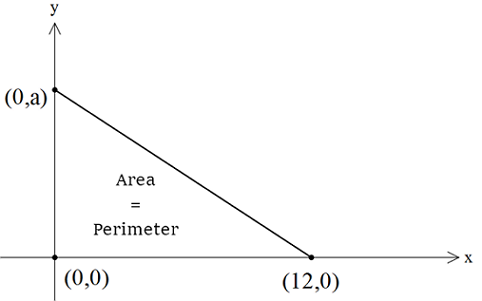Seeking The Right Answer

A non-degenerate right-angled triangle has vertices at and with . Its perimeter is numerically equal to its area. What is ?
The answer is 5.
This section requires Javascript.
You are seeing this because something didn't load right. We suggest you, (a) try
refreshing the page, (b) enabling javascript if it is disabled on your browser and,
finally, (c)
loading the
non-javascript version of this page
. We're sorry about the hassle.
The legs of the triangle have length 12 and a. Since the area is equal to the perimeter:
1 / 2 × 1 2 × a = 1 2 + a + 1 2 2 + a 2
6 a = 1 2 + a + 1 4 4 + a 2
5 a − 1 2 = 1 4 4 + a 2
2 5 a 2 − 1 2 0 a + 1 4 4 = 1 4 4 + a 2
2 4 a 2 − 1 2 0 a = 0
( 2 4 a ) ( a − 5 ) = 0
24a = 0 or a-5 = 0
a = 0 or a = 5
Since the triangle is not degenerate, we eliminate a = 0, leaving a = 5.